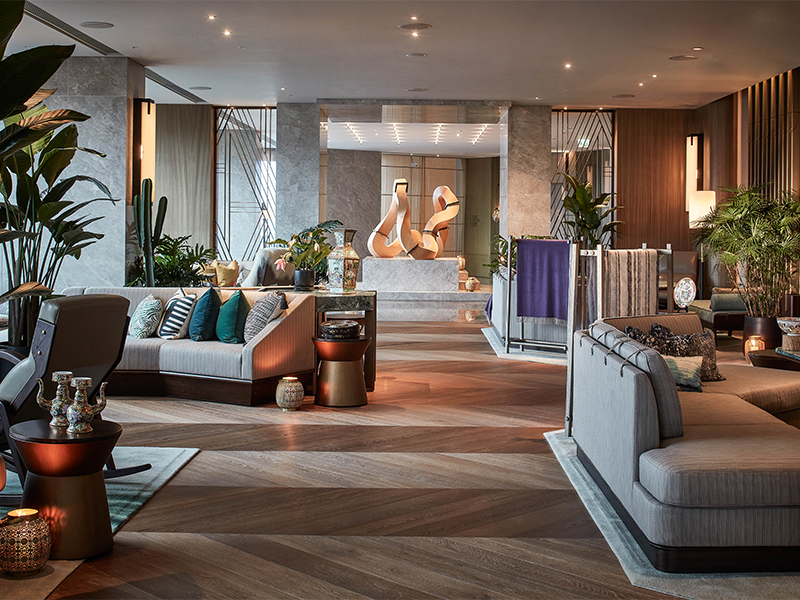Among the lifestyle perks that come with calling K11 ARTUS home is having direct access to amazing arts and crafts throughout the accommodation at this luxury serviced residence in Tsim Sha Tsui. We take a look at four highlights.

#1 Famille Rose Porcelain Vases by Mason’s – 19th century
Contrary to their appearance, these vases were not made by a Chinese artist, but instead by foreign artists imitating Chinese art. In the Qing Dynasty (1644- 1912), when traditional Chinese art was popular with Europe’s aristocrats, guangcai – hand-painted ware on white porcelain (also known as Canton porcelain) – was a successful example of an East-meets-West cultural exchange.
These particular vases were made by Mason’s, established in London in 1796 by Miles Mason, a merchant of imported chinaware and glassware. The painting on the body shows the legendary Chinese hero Xiang Yu, a valiant warlord who was said to possess unusual physical strength. He is painted with a sideway stance and backward stare to show his power.
#2 Baibaoqian Closet – 17th century
This extraordinary late Ming Dynasty closet is made of pinewood covered with black lacquer. It’s named for the delicate and intricate wood inlay work – a technique known as baibaoqian – that features on the doors. Workmen skilfully carve each inlay component separately before assembling them together to create an image rich in colour, texture and depth.
In this instance, the baibaoqian inlay work combines with gold lacquer to depict a lively scene of children playing and having fun. “Children at Play” is a recurring theme in Chinese art; it symbolises a fruitful life blessed with many offspring and a prosperous future. This type of closet was a “must-have” piece of furniture for every well-respected Chinese family back in the day.
#3 …or…No.1 by Wang Jianwei – 2016
Established Chinese artist Wang Jianwei created this magnificent wooden sculpture. His work appears in top international institutions such as New York’s Museum of Modern Art and Solomon R. Guggenheim Museum.
The artwork’s angled and curved shapes clearly expose the artist’s working method and process. When sunlight shines on the work, for instance, it gets deflected by the polished surface; yet, on close observation, you can see the details of metal work, seemingly still in the process of making.
The lack of contextual body makes the work very visual, and rather formalist. It’s a concrete object that provokes ideas and questions – about art, society and history. It makes this particular space in the residence an ideal place for contemplation and self-reflection.
#4 8/8 Landscape by Kensou Ho Kwun Ting – 2018-2019
Putting up “cut-paper art” on windows and doors at home is an age-old Chinese tradition to symbolise luck and happiness. This installation by Hong Kong artist Kensou Ho Kwun Ting takes the concept of papercutting and replicates it in stainless steel.
It’s a sublime example of using the so-called gongbi technique in Chinese painting, where whimsical outlines sketch out objects in daily life or images from memory. In this case, the two-dimensional drawings appear as three-dimensional sculptures made of die-cut metal.
There are eight pieces in all; together they form a complete story about the engagement trip of a young couple. The couple challenges themselves by walking to the top of a mountain to catch the first rays of a day.
K11 ARTUS luxury serviced residence is at Victoria Dockside, 18 Salisbury Road, Tsim Sha Tsui. For enquiries and more information on accommodation options, call 2107 3388 or visit artus.com.hk. You can also discover more on social media, @K11artus.
This article first appeared in the Summer 2022 issue of Expat Living magazine. Subscribe now so you never miss an issue.










